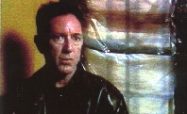
An emeritus professor at the University of Cape Town, South Africa, where he lives and works. He studied painting and engraving at the Pretoria College for Advanced Technical Education (currently the Tswane University of Technology) from 1967 to 1970. Over that period he learned that he was being deliberately undergraded due to his participation in anti-Apartheid social movements. While in college he became interested in Marcel Duchamp and created his first work: serigraph parodies of the styles of leading post-war artists, such as Andy Warhol and Frank Stella. In 1972 he became a Painting, Sculpture and Engraving professor at the Johannesburg College of Art, even though the dean at Pretoria College tried to prevent him from being hired due to his political views. In 1972 and 1973 he pursued a postgraduate degree from the Saint Martin School of Arts in London, where he became acquainted with the sculpture and the modernist ideas of William Tucker, Herbert Caro and Phillip King, with whom he attended classes. However, Payne’s Duchampian verve wound up clashing with the status quo of the school, which was heavily influenced by the writings of Clement Greenberg. In the 1980s he became involved in the movements that ultimately overthrew the Apartheid regime, with Nelson Mandela’s election. In 1994, he invited twenty artists to reflect on the transition into democracy in the show XIT., held at the South African Association of Arts, which he curated. In 1995 he represented South Africa in the 46th Venice Biennale. From 1995 to 2002 he worked almost exclusively on one video, having featured in the Tom van Vliet-curated World Wide Video Festival in Amsterdam, in March 2002. He retired from academic life in 2010, and took an interest in digital and electronic media work.